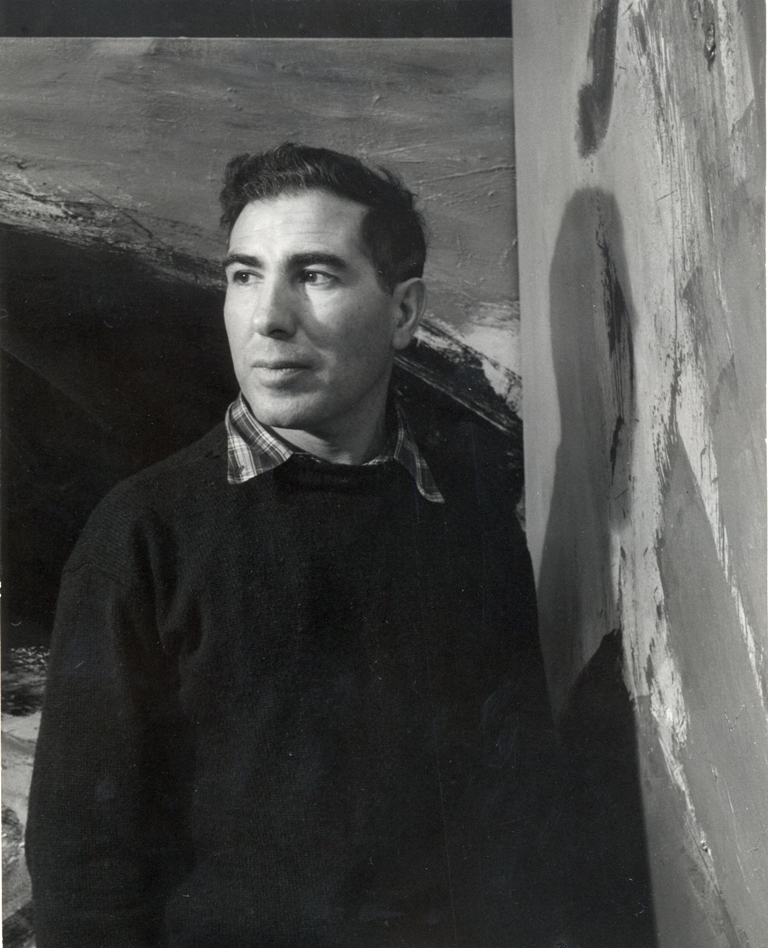Guerrero, José

José Guerrero (Granada, 27 October 1914-Barcelona, 23 December 1991) was a Spanish painter and engraver who upon becoming an American citizen, made significant contributions to the abstract expressionist movement.
He spent his chilhood and adolescence in Granada living with his family and taking night classes at the Escuela de Artes y Oficios in Granada. He continued his art studies after the Civil War at the Escuela Superior de Bellas Artes de San Fernando in Madrid, where he became the disciple of Daniel Vázquez Díaz.
In 1945 the French government awarded him a scholarship that enabled him to study at the École des Beaux Arts in Paris, which introduced him to the European avant-garde and to already established Spanish painters at the School of Paris.
In 1949 he married American journalist Roxane Whittier Pollock; and moved to Philadelphia before going to New York a year later. Once in NYC he was able to introduce his work to galleries such as Betty Parssons gallery and learn new techniques, such as engraving at Atelier 17 with Stanley William Hayter. He became a US citizen in 1953.
In 1954 he was part of an exhibition at the Art Club of Chicago, with Miró, marking his international breakthrough. He returned to Spain in 1965 and exhibited at the Galería de Juana Mordó, establishing his well-deserved recognition in his homeland. He soon returned to NYC, but traveled to Spain again a couple years later.
Considered one of the most outstanding Spanish painters of the New York School, he received early fame when he was appointed Knight of the Order of Arts and Letters by the French government (1959). Throughout his career he won other notable awards such as the Gold Medal for Fine Arts (1984) and was also a key figure in the creation of the Museum of Abstract Art in Cuenca. In 2000 the Centro de Arte José Guerrero opened its doors in Granada, with the task of conserving, exhibiting and promoting the study and dissemination of the artist's work.
Guerrero helped advance figurative art. During his time in Paris he became friends with Picasso, Juan Gris and Miró, and was greatly impressed by the work of Matisse. These avant-garde influences are clearly recognizable in his early work, yet once he entered the US and discovered abstract expressionism, such influences dissipated. He took Mark Rothko, Franz Kline, and Robert Motherwell, among others, as points of reference, and created works that underwent a progressive process of abstraction and formal synthesis towards the beginning of the 1960s. His interest in chromatic colors expanded over his pictorial surfaces, while his gestural painting revealed his preference for mural painting.
Spain, and specifically Granada, took center stage in his production prior to his return. Towards the end of the sixties, he began a new phase with the series Fosforescencias, and subsequently the theme of the arch became recurrent in a series of paintings. Years later, the compositional order, the mastery of color, as well as his conception of the painting as a wall, were the basis of his work.